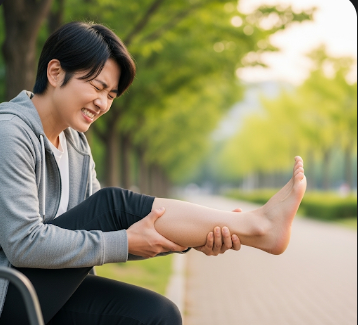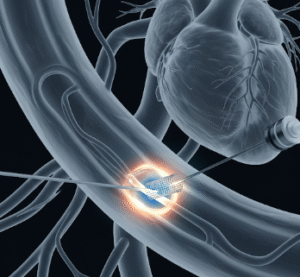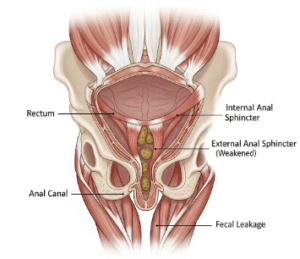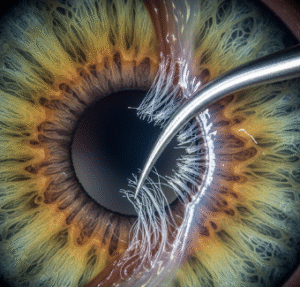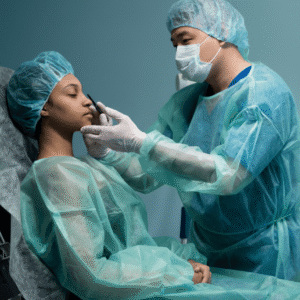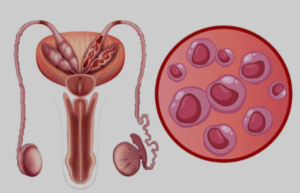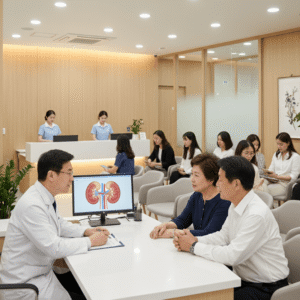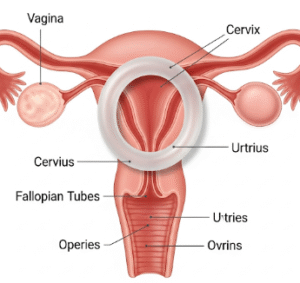Overview
Leg cramps are sudden, involuntary contractions or tightening of the muscles in the leg, often affecting the calf, thigh, or foot. They can occur during activity or rest and are particularly common at night, known as nocturnal leg cramps.
In Korea, clinics specializing in orthopedics, neurology, and sports medicine provide comprehensive care for leg cramps. While many cases are benign and related to muscle fatigue, persistent or severe cramps may indicate underlying medical conditions such as circulatory disorders, electrolyte imbalances, or nerve-related problems. Proper evaluation can relieve discomfort and prevent complications.
Key Facts
- ➔ Leg cramps are common in adults over 50, but they can affect younger individuals, especially athletes.
- ➔ They can last a few seconds to several minutes and often resolve spontaneously.
- ➔ Risk factors include dehydration, prolonged standing, overexertion, or certain medications.
- ➔ Persistent or severe cramps may indicate neurological, vascular, or metabolic issues.
- ➔ Early intervention helps reduce frequency, intensity, and impact on daily activities.
What is Leg Cramps?
A leg cramp is a sudden, involuntary contraction of the leg muscles:
- ➔ Muscle groups commonly affected: Calf (gastrocnemius), thigh (quadriceps and hamstrings), or foot muscles
- ➔ Characteristics: Sharp pain, visible muscle bulge, and temporary stiffness
- ➔ Duration: Usually brief, lasting seconds to a few minutes, but may leave residual soreness
- ➔ Clinical significance: Occasional cramps are generally harmless, but frequent or severe cramps may signal underlying health issues requiring medical evaluation
What Symptoms Are Related To
Leg cramps may be associated with other signs or conditions:
- ➔ Muscle pain or soreness following the cramp
- ➔ Swelling or redness in rare cases if related to vascular issues
- ➔ Tingling or numbness if caused by nerve compression
- ➔ Weakness or fatigue in the leg muscles
- ➔ Difficulty walking or performing daily activities during frequent episodes
- ➔ Associated systemic symptoms: Fatigue, dehydration, or electrolyte imbalance
These related symptoms help clinicians differentiate benign cramps from more serious causes.
What Causes / Possible Causes
Leg cramps can occur due to a variety of mechanical, metabolic, or neurological factors:
- ➔ Muscle fatigue: Overuse during exercise or prolonged standing
- ➔ Dehydration: Low fluid intake reducing muscle function
- ➔ Electrolyte imbalance: Deficiency of potassium, magnesium, calcium, or sodium
- ➔ Poor circulation: Peripheral artery disease (PAD) causing cramps during exertion
- ➔ Nerve compression: Sciatica or spinal issues affecting leg nerves
- ➔ Medication side effects: Diuretics, statins, or beta-agonists
- ➔ Pregnancy: Increased leg cramps due to hormonal changes and pressure on leg veins
- ➔ Chronic illnesses: Diabetes, kidney disease, or liver disease may contribute
Understanding the cause is key to targeted treatment and prevention strategies.
When Should I See My Doctor
Seek medical advice if leg cramps are:
- ➔ Frequent, severe, or persistent
- ➔ Accompanied by swelling, redness, or warmth in the leg
- ➔ Associated with numbness, tingling, or weakness
- ➔ Occurring along with chest pain, shortness of breath, or systemic symptoms
- ➔ Not relieved by stretching, hydration, or lifestyle modifications
Timely consultation can rule out serious conditions such as vascular disease, neuropathy, or metabolic disorders.
Care and Treatment
Treatment of leg cramps focuses on relief during episodes and prevention of recurrence:
- ➔ Stretching exercises: Calf stretches, hamstring stretches, and foot flexion during a cramp
- ➔ Hydration: Adequate water intake to prevent muscle dehydration
- ➔ Electrolyte management: Maintaining normal levels of potassium, magnesium, calcium, and sodium through diet or supplements
- ➔ Massage and warm compresses: Relieve tension and improve blood flow
- ➔ Physical therapy: Strengthening and flexibility exercises for recurrent cramps
- ➔ Lifestyle adjustments: Avoiding prolonged standing, overexertion, and high heels; maintaining a healthy weight
- ➔ Medication review: Consult your doctor if you suspect drug-induced cramps
With proper care, most leg cramps can be managed effectively and reduced in frequency and intensity.
Treatment Options in Korea
Korean hospitals and clinics provide comprehensive management for leg cramps:
- ➔ Diagnostic evaluations: Blood tests to check electrolytes, kidney, and liver function, vascular studies, and nerve conduction tests
- ➔ Specialist consultations: Orthopedists, neurologists, and physiatrists for targeted management
- ➔ Physical therapy programs: Stretching, strengthening, and posture correction
- ➔ Medication management: Supplements or medications for electrolyte imbalance or underlying conditions
- ➔ Advanced care: For cramps caused by vascular or neurological issues, interventional procedures or surgery may be considered
- ➔ Integrated care: Multidisciplinary approach for patients with chronic illnesses or recurrent cramps
Leading hospitals such as Seoul National University Hospital, Asan Medical Center, and Samsung Medical Center offer state-of-the-art diagnostics, physical therapy, and individualized treatment plans, ensuring effective management and improved quality of life.
In Summary: Leg cramps are common, often benign muscle contractions, but persistent or severe episodes may indicate underlying health issues. Timely evaluation and management in Korea can relieve discomfort, prevent recurrence, and address potential medical causes.
- ➔ Key Takeaway: Frequent, severe, or painful leg cramps should not be ignored and may require medical evaluation.
- ➔ Action Point: Seek professional care for diagnosis, electrolyte assessment, and personalized prevention strategies.

